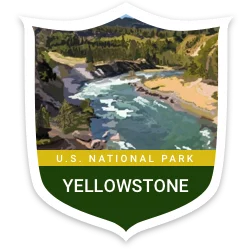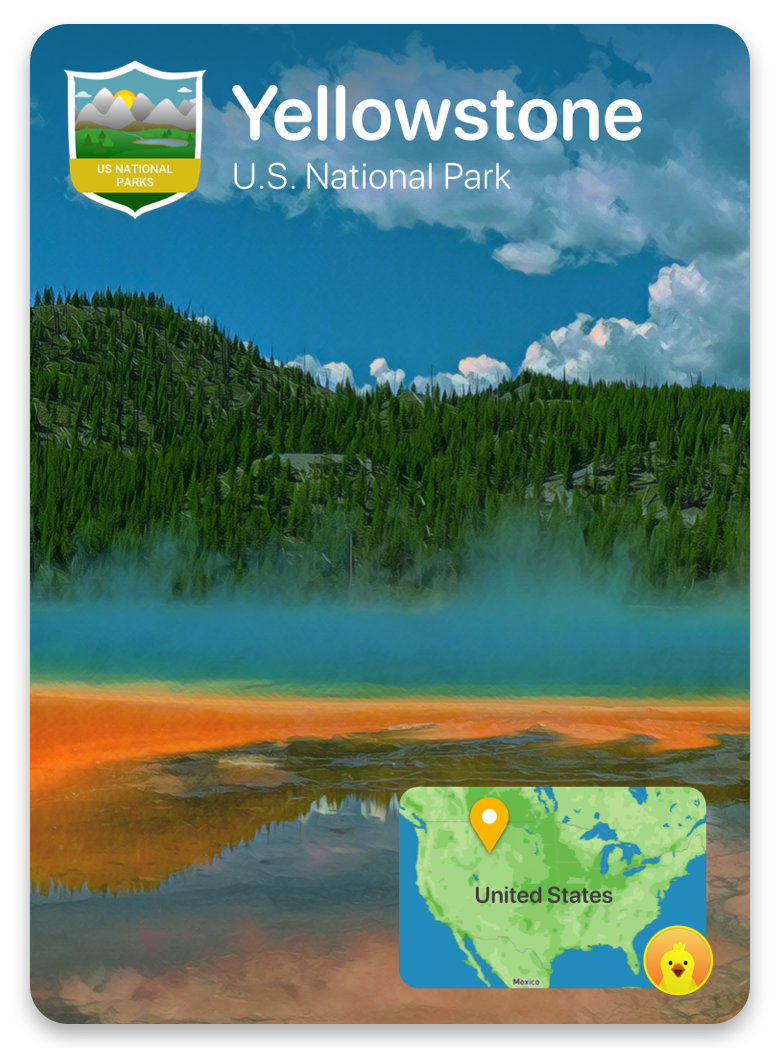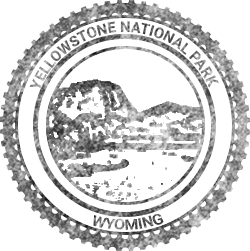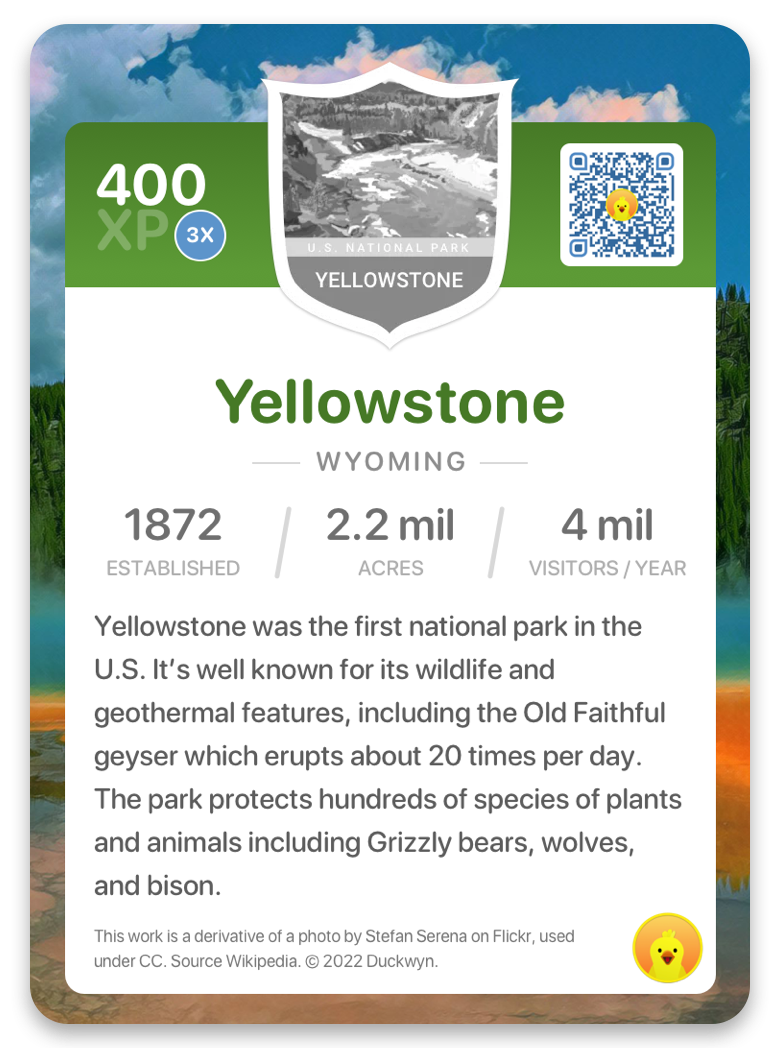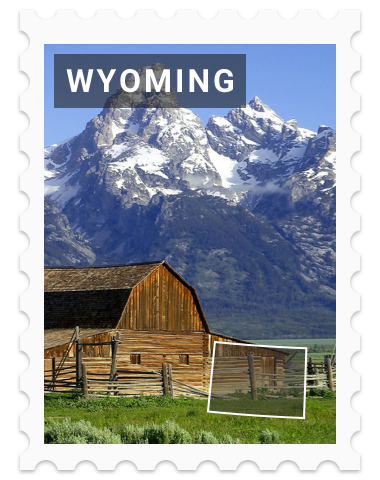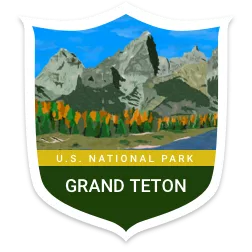Yellowstone National Park United States

Experience the wildlife and geothermal features of the first national park in the world.
Photo by Stefan Serena
Kid Rating:




Yellowstone National Park changed how the world treated nature. When Congress created it in 1872, it became the first national park anywhere. President Ulysses S. Grant signed it into law, setting an example that other countries would soon follow. For the first time, a nation protected wild land for the good of everyone.
The park covers more than 3,400 square miles across Wyoming, Montana, and Idaho. Beneath it lies the Yellowstone Caldera, one of the largest dormant supervolcanoes on Earth. That heat drives a network of geysers, hot springs, mudpots, and fumaroles. In all, there are more than 10,000 geothermal features here, fueled by steam and pressure that rise from the molten rock below.
Old Faithful is the park’s most famous geyser. It erupts about every 90 minutes, sending boiling water and steam more than 100 feet into the air. Visitors gather around its boardwalk daily, waiting for the moment it roars to life. Other geysers, including Grand and Steamboat, erupt with even greater force but less regular timing. The Grand Prismatic Spring nearby glows in deep bands of orange, blue, and green, its colors created by heat-loving microbes.
People have lived in this region for at least 11,000 years. Native American tribes hunted, fished, and gathered plants here long before European explorers arrived. They understood the rhythm of the land and used the hot springs for warmth and healing. When trappers and surveyors told stories of “boiling earth” in the 1800s, many back east thought they were exaggerating.
Yellowstone Lake stretches across the park’s center, one of the largest high-elevation lakes in North America. Around it, elk graze, wolves hunt, and bison roam. The park’s bison herd, the oldest and largest in the country, is a symbol of survival and wild strength.
Protecting Yellowstone took effort and time. Poachers and vandals once damaged the park’s fragile features until the U.S. Army arrived in 1886 to enforce its rules. The National Park Service took over in 1917 and has cared for Yellowstone ever since.
Fires, snow, and volcanic heat continue to shape the park. Even after the great fires of 1988, new forests rose quickly from the blackened ground.
Yellowstone remains powerful, unpredictable, and alive, a reminder of why some places must be protected forever.

